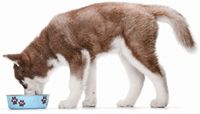Dig into diet plans for pets
Help your team adapt to change and energize your connection with pet owners.
During office visits, pet owners often ask questions about their pet's nutrition. To answer their questions effectively, we use these steps to boost compliance:

GETTY IMAGES/CHRIS STEIN
> Start with an exam. The doctor will evaluate each pet based on their dietary needs, such as weight control and disease management.
> Give guidelines for feeding. Next we create a customized diet plan for each pet. We use a nutritional index that lists the most common diets and their caloric content to quickly combine the pet's dietary need, the caloric content of a certain diet and the pet's optimal daily caloric intake to create a unique diet.
To create an index for your practice, use Excel to create a spreadsheet of the calories in the foods you recommend. Then you can plug in the patient's weight and the desired caloric content for daily feeding recommendations tailored to the pet. This way, you send every pet home with a customized diet plan to follow.
These diet plans often make nutrition discussions more efficient, and they improve pet owner compliance, which leads to happier, healthier pets.
Ciera Miller, CVT, is a Firstline Editorial Advisory Board member and a technician at Metzger Animal Hospital in State College, Pa.
Newsletter
From exam room tips to practice management insights, get trusted veterinary news delivered straight to your inbox—subscribe to dvm360.